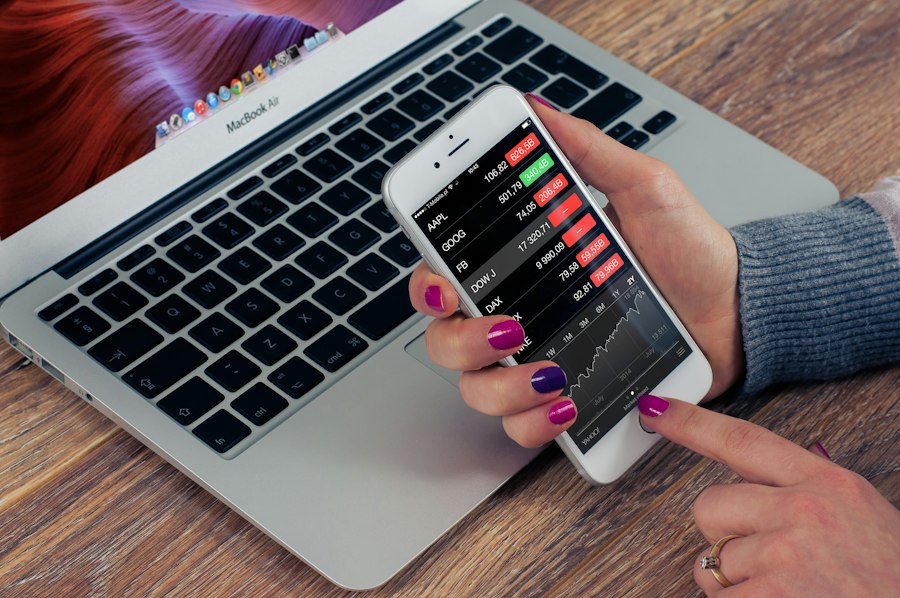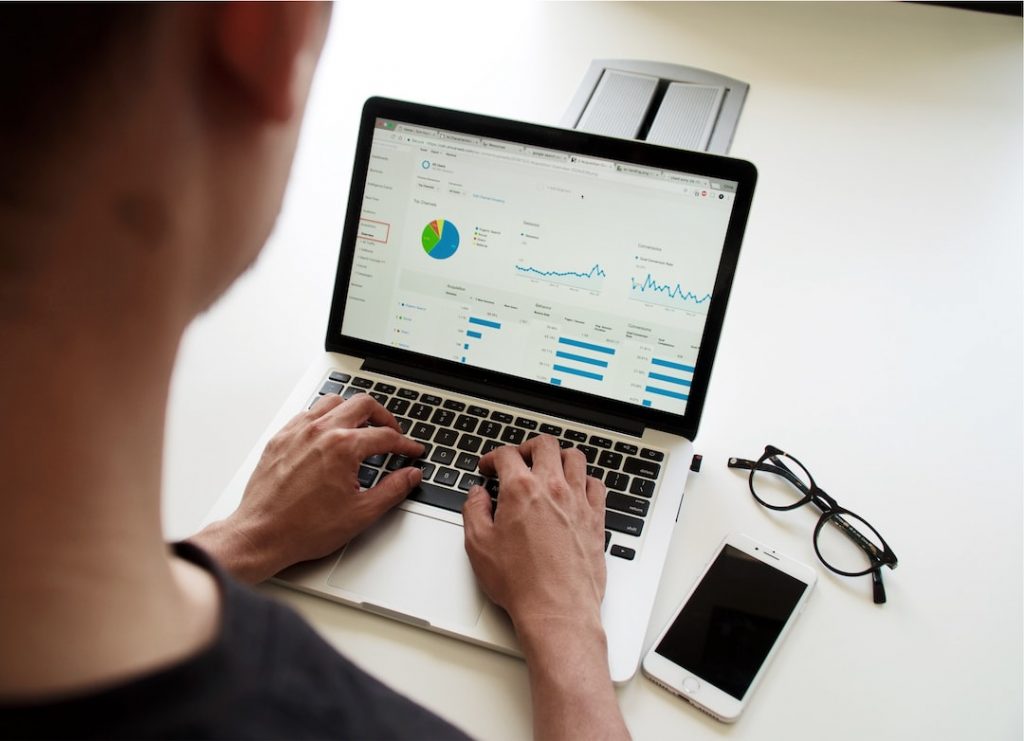Quantitative analysis plays a crucial role in business decision-making. It involves the use of mathematical and statistical techniques to gather, organise, analyse, and interpret data. By using quantitative analysis, businesses can make informed decisions based on objective data rather than relying on intuition or guesswork.
The benefits of using quantitative analysis in business operations are numerous. Firstly, it allows businesses to identify patterns and trends in data, which can help them understand customer behaviour, market trends, and other factors that may impact their operations. This knowledge can then be used to develop strategies and make informed decisions that will drive business growth.
Secondly, quantitative analysis provides businesses with a way to measure and evaluate the effectiveness of their strategies and initiatives. By collecting and analysing data, businesses can assess the impact of their actions and make adjustments as needed. This helps them to continuously improve their operations and achieve better results.
Overall, quantitative analysis provides businesses with a systematic and objective approach to decision-making. It helps them to reduce uncertainty and make more accurate predictions about the future. By using data-driven insights, businesses can gain a competitive advantage and achieve long-term success.
Summary
- Quantitative analysis is crucial for businesses to make informed decisions and stay competitive.
- Key concepts and terminology in quantitative analysis include variables, data sets, and statistical models.
- Effective data management involves gathering, organising, and cleaning data using tools like spreadsheets and databases.
- Commonly used data analysis techniques include descriptive statistics, correlation analysis, and regression analysis.
- Statistical inference involves testing hypotheses and calculating confidence intervals to make conclusions about a population based on a sample.
Defining Quantitative Analysis: Key Concepts and Terminology
Quantitative analysis is a methodical approach to decision-making that involves the use of mathematical and statistical techniques to gather, organise, analyse, and interpret data. It is based on the principle that data can be quantified and analysed to provide valuable insights.
There are several key concepts and terminology used in quantitative analysis that are important to understand. These include variables, data types, measures of central tendency, measures of dispersion, correlation, regression analysis, hypothesis testing, confidence intervals, time series analysis, data visualisation, and machine learning.
Variables are characteristics or attributes that can take on different values. In quantitative analysis, variables can be classified as either independent or dependent variables. Independent variables are those that are manipulated or controlled by the researcher, while dependent variables are those that are measured or observed.
Data types refer to the different ways in which data can be classified. Common data types include numerical data (such as age or income), categorical data (such as gender or occupation), and ordinal data (such as rating scales).
Measures of central tendency are used to describe the average or typical value of a dataset. Common measures of central tendency include the mean, median, and mode.
Measures of dispersion are used to describe the spread or variability of a dataset. Common measures of dispersion include the range, variance, and standard deviation.
Correlation is a statistical technique that measures the strength and direction of the relationship between two variables. It is often used to determine whether there is a relationship between variables and to what extent they are related.
Regression analysis is a statistical technique that is used to model and predict the relationship between a dependent variable and one or more independent variables. It is often used to identify the factors that influence a particular outcome and to make predictions based on those factors.
Hypothesis testing is a statistical technique that is used to test whether there is a significant difference between two or more groups or populations. It involves formulating a null hypothesis and an alternative hypothesis, collecting data, and using statistical tests to determine whether the null hypothesis should be rejected or not.
Confidence intervals are used to estimate the range within which a population parameter is likely to fall. They provide a measure of uncertainty and allow for more accurate predictions.
Time series analysis is a statistical technique that is used to analyse trends and patterns in temporal data. It involves identifying patterns, forecasting future values, and making decisions based on historical data.
Data visualisation involves the use of charts, graphs, and dashboards to present data in a visual format. It helps to communicate insights and make complex information more understandable.
Machine learning is a branch of artificial intelligence that involves the use of algorithms and models to automatically learn from data and make predictions or decisions. It is often used in quantitative analysis to automate and optimise analysis processes.
Gathering and Organising Data: Best Practices and Tools for Effective Data Management
Gathering and organising data is a critical step in the quantitative analysis process. It involves collecting relevant data, ensuring its accuracy and completeness, and organising it in a way that facilitates analysis.
There are several best practices for data collection and organisation that businesses should follow. Firstly, it is important to clearly define the objectives of the analysis and identify the specific data that is needed to achieve those objectives. This will help to ensure that the data collected is relevant and useful.
Secondly, businesses should use reliable and valid data collection methods to ensure the accuracy of the data. This may involve conducting surveys, interviews, or experiments, or collecting data from existing sources such as databases or online sources.
Thirdly, businesses should ensure that the data collected is complete and free from errors. This can be achieved by implementing quality control measures such as double-checking data entries, conducting data validation checks, and cleaning the data to remove any outliers or inconsistencies.
Once the data has been collected, it needs to be organised in a way that facilitates analysis. This may involve creating a database or spreadsheet to store the data, assigning variables to each data point, and labelling the variables with clear and meaningful names.
There are several tools and software available that can help businesses effectively manage their data. These include spreadsheet software such as Microsoft Excel, statistical software such as SPSS or R, and database management systems such as MySQL or Oracle.
These tools provide businesses with the ability to store, manipulate, analyse, and visualise their data in a user-friendly and efficient manner. They also offer advanced features such as data cleaning, statistical analysis, and data visualisation capabilities.
Data Analysis Techniques: An Overview of Commonly Used Methods and Approaches
| Data Analysis Technique | Description |
|---|---|
| Descriptive Statistics | A set of techniques used to describe and summarize data, including measures of central tendency, variability, and correlation. |
| Inferential Statistics | A set of techniques used to make inferences about a population based on a sample of data, including hypothesis testing and confidence intervals. |
| Regression Analysis | A technique used to model the relationship between a dependent variable and one or more independent variables, including linear regression and logistic regression. |
| Cluster Analysis | A technique used to group similar objects or observations into clusters based on their characteristics or attributes. |
| Factor Analysis | A technique used to identify underlying factors or dimensions that explain the variation in a set of observed variables. |
| Principal Component Analysis | A technique used to reduce the dimensionality of a dataset by identifying the most important variables or components. |
| Time Series Analysis | A technique used to analyze and model data that varies over time, including trend analysis and forecasting. |
Once the data has been gathered and organised, the next step in the quantitative analysis process is to analyse the data. There are several commonly used data analysis techniques that businesses can employ to gain insights from their data.
Descriptive statistics is a technique that is used to summarise and describe the main features of a dataset. It involves calculating measures of central tendency (such as the mean, median, and mode) and measures of dispersion (such as the range, variance, and standard deviation).
Inferential statistics is a technique that is used to make inferences or predictions about a population based on a sample of data. It involves using statistical tests to determine whether there is a significant difference between groups or populations, estimating population parameters using confidence intervals, and testing hypotheses.
Correlation analysis is a technique that is used to measure the strength and direction of the relationship between two variables. It involves calculating correlation coefficients (such as Pearson’s correlation coefficient) and determining whether the relationship is statistically significant.
Regression analysis is a technique that is used to model and predict the relationship between a dependent variable and one or more independent variables. It involves fitting a regression model to the data, estimating the coefficients of the model, and making predictions based on those coefficients.
Time series analysis is a technique that is used to analyse trends and patterns in temporal data. It involves identifying patterns, forecasting future values, and making decisions based on historical data.
Cluster analysis is a technique that is used to group similar objects or individuals together based on their characteristics. It involves using algorithms to identify clusters or groups within a dataset and assigning objects or individuals to those clusters.
Factor analysis is a technique that is used to identify underlying factors or dimensions within a dataset. It involves reducing the dimensionality of the data by grouping variables into factors and determining how much each variable contributes to each factor.
These are just a few examples of the many data analysis techniques that businesses can use to gain insights from their data. The choice of technique will depend on the specific objectives of the analysis and the nature of the data.
Statistical Inference: Understanding the Basics of Hypothesis Testing and Confidence Intervals
Statistical inference is a key concept in quantitative analysis. It involves using sample data to make inferences or predictions about a population.
Hypothesis testing is a statistical technique that is used to test whether there is a significant difference between two or more groups or populations. It involves formulating a null hypothesis and an alternative hypothesis, collecting data, and using statistical tests to determine whether the null hypothesis should be rejected or not.
The null hypothesis is a statement that assumes there is no difference between groups or populations, while the alternative hypothesis is a statement that assumes there is a difference. The goal of hypothesis testing is to determine whether there is enough evidence to reject the null hypothesis in favour of the alternative hypothesis.
Confidence intervals are used to estimate the range within which a population parameter is likely to fall. They provide a measure of uncertainty and allow for more accurate predictions.
A confidence interval consists of an interval estimate and a confidence level. The interval estimate is a range of values within which the population parameter is likely to fall, while the confidence level is a measure of how confident we are that the interval estimate contains the true population parameter.
For example, if we calculate a 95% confidence interval for the mean age of a population, we can say that we are 95% confident that the true mean age falls within that interval.
Hypothesis testing and confidence intervals are important tools in quantitative analysis as they allow businesses to make inferences or predictions about populations based on sample data. They provide a way to quantify uncertainty and make more accurate decisions.
Regression Analysis: Using Linear Models to Predict and Explain Relationships Between Variables

Regression analysis is a widely used technique in quantitative analysis. It is used to model and predict the relationship between a dependent variable and one or more independent variables.
A regression model is a mathematical equation that describes the relationship between the dependent variable and the independent variables. The most common type of regression model is the linear regression model, which assumes a linear relationship between the variables.
In a linear regression model, the dependent variable is predicted as a linear combination of the independent variables. The coefficients of the model represent the strength and direction of the relationship between the variables.
Regression analysis can be used for both prediction and explanation. In prediction, the goal is to use the regression model to make predictions about the dependent variable based on the values of the independent variables. In explanation, the goal is to understand how changes in the independent variables affect the dependent variable.
There are several types of regression analysis that can be used depending on the nature of the data and the objectives of the analysis. These include simple linear regression, multiple linear regression, logistic regression, and nonlinear regression.
Simple linear regression is used when there is a single independent variable and a linear relationship between that variable and the dependent variable. Multiple linear regression is used when there are multiple independent variables and a linear relationship between those variables and the dependent variable.
Logistic regression is used when the dependent variable is binary or categorical. It is often used in classification problems where the goal is to predict which category an observation belongs to based on its characteristics.
Nonlinear regression is used when there is a nonlinear relationship between the variables. It allows for more flexibility in modelling complex relationships but may require more advanced techniques and assumptions.
Regression analysis is a powerful tool in quantitative analysis as it allows businesses to make predictions and explain relationships between variables. By understanding how changes in one variable affect another, businesses can make informed decisions and develop effective strategies.
Time Series Analysis: Analysing Trends and Patterns in Temporal Data
Time series analysis is a technique that is used to analyse trends and patterns in temporal data. It involves identifying patterns, forecasting future values, and making decisions based on historical data.
Temporal data refers to data that is collected over time. Examples of temporal data include stock prices, sales figures, weather data, and economic indicators.
There are several techniques that can be used to analyse time series data. These include trend analysis, seasonal analysis, cyclical analysis, and forecasting.
Trend analysis is used to identify long-term trends or patterns in the data. It involves fitting a trend line to the data and determining whether the trend is increasing, decreasing, or stable.
Seasonal analysis is used to identify seasonal patterns or fluctuations in the data. It involves decomposing the data into its seasonal, trend, and residual components and analysing each component separately.
Cyclical analysis is used to identify cyclical patterns or fluctuations in the data. It involves identifying cycles or waves in the data and determining their length and amplitude.
Forecasting is used to predict future values of the dependent variable based on historical data. It involves fitting a model to the data, estimating the model parameters, and using those parameters to make predictions.
There are several techniques that can be used for forecasting, including moving averages, exponential smoothing, and autoregressive integrated moving average (ARIMA) models.
Time series analysis is a valuable tool in quantitative analysis as it allows businesses to understand and predict trends and patterns in temporal data. By analysing historical data, businesses can make informed decisions and develop effective strategies for the future.
Data Visualisation: Creating Effective Charts, Graphs, and Dashboards to Communicate Insights
Data visualisation is an important aspect of quantitative analysis. It involves the use of charts, graphs, and dashboards to present data in a visual format.
The goal of data visualisation is to communicate insights and make complex information more understandable. By presenting data visually, businesses can quickly and easily identify patterns, trends, and relationships that may not be apparent in raw data.
There are several best practices for creating effective charts, graphs, and dashboards. Firstly, it is important to choose the right type of visualisation for the data and the objectives of the analysis. Common types of visualisations include bar charts, line charts, scatter plots, pie charts, and heat maps.
Secondly, it is important to use clear and meaningful labels and titles to help users understand the data. Labels should be concise and descriptive, and titles should clearly state the purpose of the visualisation.
Thirdly, it is important to use appropriate scales and axes to accurately represent the data. Scales should be chosen based on the range of values in the data, and axes should be labelled with clear units of measurement.
Fourthly, it is important to use colours and shapes effectively to differentiate between different categories or groups in the data. Colours should be chosen based on their meaning and should be consistent across different visualisations.
Finally, it is important to provide context and annotations to help users interpret the data. This may involve adding reference lines or benchmarks, providing explanations or definitions of terms, or highlighting key insights or findings.
There are several tools and software available that can help businesses create effective charts, graphs, and dashboards. These include spreadsheet software such as Microsoft Excel, data visualisation software such as Tableau or Power BI, and programming languages such as R or Python.
These tools provide businesses with the ability to analyze and interpret large amounts of data in order to make informed decisions. They can help businesses identify patterns, trends, and correlations within their data, allowing them to uncover valuable insights and opportunities. Additionally, these tools often offer advanced visualization capabilities, making it easier for businesses to communicate their findings and share information with stakeholders. Overall, these tools empower businesses to leverage their data effectively and drive strategic decision-making.
FAQs
What is quantitative analysis?
Quantitative analysis is a method of measuring and interpreting numerical data using statistical and mathematical techniques. It involves collecting and analyzing data to identify patterns, trends, and relationships.
What are the benefits of quantitative analysis?
Quantitative analysis provides a systematic and objective approach to data analysis, which helps to eliminate bias and subjectivity. It also allows for the identification of patterns and trends that may not be apparent through qualitative analysis alone. Additionally, quantitative analysis can be used to make predictions and inform decision-making.
What are some common techniques used in quantitative analysis?
Some common techniques used in quantitative analysis include regression analysis, correlation analysis, hypothesis testing, and statistical modeling. These techniques are used to identify relationships between variables, test hypotheses, and make predictions based on data.
What types of data are used in quantitative analysis?
Quantitative analysis typically involves the use of numerical data, such as measurements, counts, and percentages. This data can be collected through surveys, experiments, or other methods of data collection.
What are some applications of quantitative analysis?
Quantitative analysis is used in a wide range of fields, including finance, economics, marketing, and healthcare. It can be used to analyze financial data, forecast sales trends, evaluate the effectiveness of marketing campaigns, and identify patterns in patient health data.


